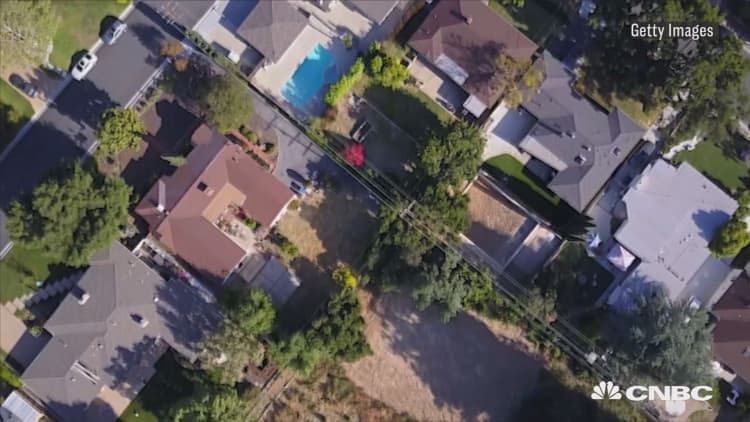
More and more people are flipping houses — the most in 10 years – but they are reaping smaller rewards. High home prices, hot competition and very, very few available homes to buy are combining to make this popular trade ever more risky.
Just more than 207,000 homes were flipped in 2017, according to a new report from Attom Data Solutions, which defines a flip as a property bought and sold in the same 12-month period. That is the highest number of flips in a decade. The number of people or companies flipping homes, 138,410, also jumped to a decade high.
Today's flippers, however, are nothing like those of a decade ago, who used cheap and easy money to finance their trades.
"The surge in home flipping in the last three years is built on a more fundamentally sound foundation than the flipping frenzy that we witnessed a little more than a decade ago," said Daren Blomquist, senior vice president at Attom Data Solutions. "While financing for flippers has become more readily available in recent years, 65 percent of flippers still used cash to buy homes flipped in 2017, nearly the reverse of 2004 to 2006, when 63 percent of flippers were leveraging financing to buy."
Today's flippers are seeing bigger gross flipping returns in dollar figures because they're dealing with much higher home prices and margins, but they are also putting more money into the projects, making the net return lower. The average gross flipping return on investment last year was 49.8 percent, down from 51.9 percent in 2016.
Taylor Denchfield has been flipping homes in Maryland since he was 17. At 25, he's a veteran with a strict strategy for profit. His net returns are about 30 percent per project.
"I'm a real estate agent so I'm able to both buy and sell the deals myself saving on the listing commission. I'm a builder, so I do have all the contractors and staff in-house to complete everything from start to finish. And I do have contacts to source off-market deals. Three of those things combined is really what permits me to be more profitable than some others," he said.
Denchfield purchased a small home in Silver Spring, Maryland, a suburb of Washington, last September. He put about $80,000 worth of work into it, and the bet paid off. He sold the property in two weeks and expects to make a net profit of about $100,000.
"You have to be able to get in for a low enough price, it has to be a hot enough neighborhood and you have to know exactly what the build is going to entail," he said.
Denchfield does use leverage for some of his deals, and private lending for house flipping is now a growing trade. While Fannie Mae will back as many as 10 investor loans per flipper, it is still very strict with underwriting, so flippers are increasingly going to private lenders.
"There is more capital available now," said Bobby Montagne, CEO of Walnut Street Finance, a Virginia-based private lender specializing in investor loans. "People are seeing others making profits in this space, so more people are going to join the party."
Above: A new deck added to a flipped house.
Interest rates on these loans, however, are significantly higher than the average rate for regular owner-occupant buyers. Investors can expect to pay 10 to 12 percent rates to private lenders, compared with the average 30-year fixed rate of 4.6 percent for conventional home loans.
"So that's just another thing that really tightens up the margins," said Denchfield.
The popularity of house flipping has been fueled by popular TV shows that make the process look both dramatic and fruitful at the same time. Denchfield warns that is the exception, not the rule.
Today's housing market is increasingly expensive, and there are historically few distressed homes for sale, unlike during the foreclosure crisis at the start of this decade. Seasoned flippers who can find properties that haven't been listed yet will fare better. Some go through wholesalers, others through real estate agent contacts.
There is also a supply crisis, especially on the lower end of the market where flippers usually make their best returns. There are more million-dollar homes available, but the risks there are even higher, given the high investment price.
Flipping returns vary by city. The highest average gross returns last year were Scranton, Pennsylvania (168.2 percent); Pittsburgh (145.5 percent); Baton Rouge, Louisiana (122.9 percent); and Philadelphia (115.7 percent). Cleveland, Baltimore and Buffalo, New York, were also above average.
Flipping rates were highest in Memphis, Tennessee; Las Vegas; Tampa, Florida; Birmingham, Alabama; and Phoenix.


